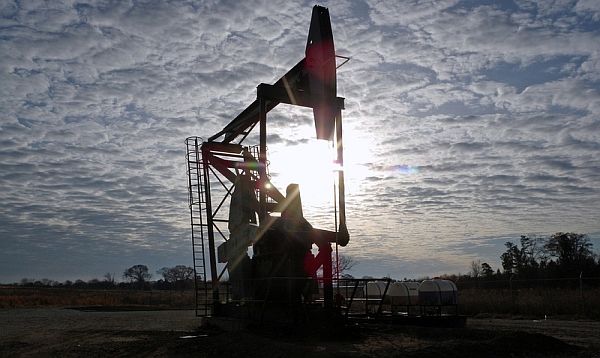Mexico City, Mexico — Tremors that shook the small town of Ramones in northeast Mexico in October were a nasty surprise to residents, including many sorghum and cattle farmers, because the area of the country had little history of earthquakes.
But they weren’t a freak occurrence. The vibrations grew more frequent into this spring, cracking the walls of some of the cinder block farmhouses. Between January and mid-April, there were a record 48 tremors across the state of Nuevo Leon, where Ramones is, compared with two in the same period last year, according to Mexico’s National Seismological Service.
When local geologists mapped the tremors and looked for causes, they quickly pointed to one of Mexico’s pioneer shale gas wells right next to the town. The well uses the techniques of hydraulic fracturing, commonly known as fracking, which injects a high-pressure mix of water, sand, and chemicals into rocks to collect gas or oil.
"The one thing that has changed is the introduction of fracking," said Ruperto De La Garza, director of the environmental impact consultancy Gestoria Ambiental y de Riesgos. "There is no other explanation."
As legislators called for answers, Nuevo Leon Governor Rodrigo Medina promised a state-federal investigation into any connection between the tremors and the shale wells — which are operated by Mexico’s government oil monopoly Pemex, along with private contractors.
The results of this probe will be an important milestone in the development of Mexico’s infant shale gas industry and in understanding its consequences.
 |
| Fracking is alleged to be linked to earth tremors in parts of Oklahoma, Ohio, California, and Texas. |
Mexico has the fourth highest amount of recoverable shale gas in the world, with 681 trillion cubic feet, according to the US Energy Information Administration. President Enrique Peña Nieto has promised growth and jobs if Mexico opens up these energy riches to global companies.
Internationally, fracking has been the subject of fierce debate between environmentalists, who claim it poisons water and pollutes air, and oil and gas companies who deny this and argue it’s fundamentally safe.
But in Mexico, the criticism has so far focused on the seismic shakes in a country that’s historically suffered from catastrophic earthquakes, especially in the center and west.
Hydraulic fracturing and its associated techniques are also alleged to be linked to earth tremors in Oklahoma, Ohio, California, Texas, and even in Lancashire, England.
Defenders of fracking point out that the tremors are usually minor and do not cause any substantial damage.
"It is not an earthquake that you typically feel. It is usually just like a truck driving by your house," said Steve Everly, a spokesman for Energy in Depth, a US research institute funded by oil and gas companies.
The tremors in Nuevo Leon state this year have only reached a magnitude of 4.3 — although they have caused some damage to houses.
Everly also points out that while fracking itself has caused a tiny number of tremors around the world, most are caused by the disposal of water used in the technique. Fracking uses millions of gallons of water, which drillers often pump into the ground when they're done with it.
 |
| Hydraulic fracturing creates millions of gallons of toxic wastewater, which drillers often dispose of by pumping it into the ground when they're done with it. |
"There are several options for better disposing of the water, or even recycling it," Everly said.
Geologists say tremors caused by the shale gas industry are also much closer to the surface than major earthquakes — which are caused by the movement of tectonic plates.
"They are very different types of geological movements. There is often a general panic about these fracking tremors and that is the wrong thing," said Aaron Velasco, an earthquake expert at the University of Texas in El Paso.
However, Velasco said it could be potentially dangerous to fracture rocks directly on a fault line. He also said that fracking and water disposal could weaken rock structures and make them more vulnerable to the effects of potent quakes.
Such ground weakening could be a problem if fracking is carried out deeper in Mexico close to the major fault lines. Shale gas deposits also lie in the highly seismic states of Guerrero and Michoacan.
The tremors in northeast Mexico have already triggered an emerging protest movement against the technique. The activists are calling for a moratorium on fracking, like those in some European countries, until more is known about its consequences.
"They say that fracking will bring jobs. But the benefits will only be enjoyed by a few people for a short time," said Juan Hernandez, a member of the Mexican Alliance Against Fracking in the city of Monterrey. "Meanwhile, the risks are too big. Who knows what damage we are really doing to our environment?"
Original Story


